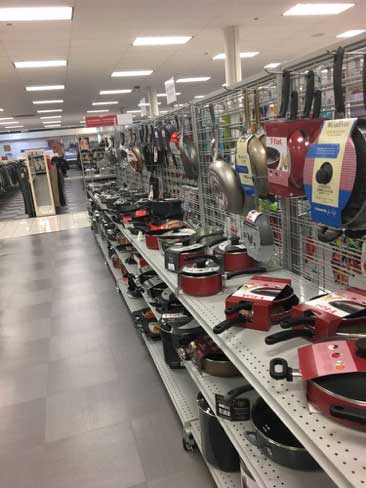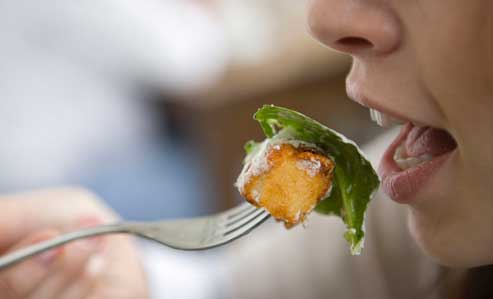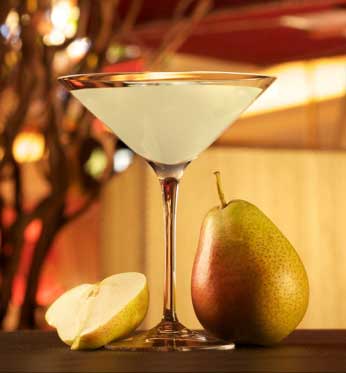
14 Aug Taste
 I recently received an email from a visitor to our website that questioned whether we were “green-washing” the use of copper for cooking. Although I thought it was a fair question in light of the repackaging and rebranding of so many familiar goods and even services these days as “green” or “organic” or “sustainable”. I’d like to look at what might be behind both the movement to clean-up perceptions as opposed to just making good things, and how the satisfactions of working with good things helps us find our way in life and make positive, humane contributions.
I recently received an email from a visitor to our website that questioned whether we were “green-washing” the use of copper for cooking. Although I thought it was a fair question in light of the repackaging and rebranding of so many familiar goods and even services these days as “green” or “organic” or “sustainable”. I’d like to look at what might be behind both the movement to clean-up perceptions as opposed to just making good things, and how the satisfactions of working with good things helps us find our way in life and make positive, humane contributions.
New and improved?
In the US we have no trouble finding cookware. As basic tools go, vessels in which to prepare food are readily available. There’s a deli in my own Brooklyn neighborhood that always has a couple of over-priced stamped, non-stick aluminum pans hanging with the canned goods. There’s a layer of dust that suggests slow sales, but still, they have the tool if you want your take-out panini toasted once you get it home and your previous cheap deli-pan just (literally) flaked-out.
 Cookware is commonplace, but doesn’t need replacing every day. How do makers of such things keep people interested in buying their goods? The obvious answer is to position the same thing as some new thing. In the case of pots and pans, they can be stamped from new materials, decorated elaborately, sprayed with the latest “non-stick” coating, given a “Stā-kool” handle, or have “Eco-” inserted somewhere in the name.
Cookware is commonplace, but doesn’t need replacing every day. How do makers of such things keep people interested in buying their goods? The obvious answer is to position the same thing as some new thing. In the case of pots and pans, they can be stamped from new materials, decorated elaborately, sprayed with the latest “non-stick” coating, given a “Stā-kool” handle, or have “Eco-” inserted somewhere in the name.
“In other words, something can be made “better” than it used to be, often by simply disparaging what it used to be.”
Better is the enemy of good
The same might be said of the food we put into those pots and pans. Having these days no cultural rudder to steer us toward good food, and subject to the relentless prodding of entities that depend on our consumption of ever more of their products, we reinvent our diets every few years – not on the basis of what our senses tell us about what would be authentically nourishing, sustaining and tasty to eat, but on the basis of pronouncements from experts, government guidelines, and (most of all) advertising, all promising to relieve doubt and increase security.
Thus have we taken to cooking on plastic to avoid cleaning up, to complex processing and microwave radiation to avoid “wasting” time on cooking, to desktop takeout to avoid downtime, to carbohydrates to avoid fats, to vegetables to avoid meat, to meat to avoid carbohydrates, and to expertism on the premise that our own palates, having been our nutritional lodestars for hundreds of thousands of years, are suddenly untrustworthy. We have somehow become inauthentic arbiters of our sustenance.
If what we thought was the good is superseded daily by the better, this leads to a collapse of faith in anything being good enough, not least of which our own senses. Thus, who can be blamed for following others professing clarity and a better way? But “better” is necessarily forward-looking, so a culture committed to better will always want for anything good in the here-and-now. This, I believe, is why “authentic” things and experiences are of such interest these days, for they represent timeless goods.
A Taste for Good Things
 Among the effects of culinary “betterment” we’ve witnessed are the collapse of the family meal, the disordering of eating, the sickening of the citizenry, the destruction of the environment and the vulgarization of taste, both literally and figuratively. Taste is the cardinal means by which humans discern pleasure and form social bonds, never more so than over food. It has been our capacity to find what tastes good to eat (and with the technologies of cooking to overcome the sometimes prickly defenses of things that are good to eat) that has allowed us to successfully forage and settle some otherwise pretty inhospitable parts of our planet.
Among the effects of culinary “betterment” we’ve witnessed are the collapse of the family meal, the disordering of eating, the sickening of the citizenry, the destruction of the environment and the vulgarization of taste, both literally and figuratively. Taste is the cardinal means by which humans discern pleasure and form social bonds, never more so than over food. It has been our capacity to find what tastes good to eat (and with the technologies of cooking to overcome the sometimes prickly defenses of things that are good to eat) that has allowed us to successfully forage and settle some otherwise pretty inhospitable parts of our planet.
“Taste is the cardinal means by which humans discern pleasure and form social bonds, especially over food.”
Hunting and growing our own food has gone the way of making our own tools or shelter, a cultural moment brought to you only in the last 100 years or so in the name of “convenience” and the advance of engineered (highly processed, or in industry vernacular “value-added”) food choices. Since we can’t smell or taste anything in a Tetra-Brik™, we read it, turning first to language and then to science to sort out layers of extra-gustatory data.
 Depending on whether we’re soy, wheat, fat- or sugar-phobic this week, the nutrition information label on packaged food tells us if what we’re holding in the grocery aisle is for dinner by addressing our insecurity du jour.
Depending on whether we’re soy, wheat, fat- or sugar-phobic this week, the nutrition information label on packaged food tells us if what we’re holding in the grocery aisle is for dinner by addressing our insecurity du jour.
Feeding ourselves thus becomes first an intellectual exercise in identifying our quarry while the question of goodness is parsed linguistically (often with words such as “real”, “authentic” and “genuine”).
If the “product” has been marketed successfully, this leads to an economic transaction, which in turn leads finally to caloric intake, often as a single serving ingested while walking, driving, or in front of a screen, providing energy to sustain a short burst of economically productive activity, and which foments demand for more of its kind. It is last of all a sensual, convivial pleasure over which a human connection can be formed. Simple, unadulterated things… say, a perfectly ripe pear, a weathered Adirondack Chair, a dry martini, up… don’t need selling.
“Simple, unadulterated things… say, a perfectly ripe pear, a weathered Adirondack Chair, a dry martini, up… don’t need selling.”
 In my field, well-made-and-well-used cookware, even in its old, dented and patinated guise; emits an almost atavistic call and is highly prized. When we trust our senses to lead us to good tools, the results appear not only to our eyes, but to our sense of mastery and the satisfaction of our commitments — to ourselves and to those we love. If, for example, we’re committed to mastering any of the culinary arts, anything you can pull off in a cheap, disposable saucepan reaches its fullest expression most readily in a tin-lined copper saucepan.
In my field, well-made-and-well-used cookware, even in its old, dented and patinated guise; emits an almost atavistic call and is highly prized. When we trust our senses to lead us to good tools, the results appear not only to our eyes, but to our sense of mastery and the satisfaction of our commitments — to ourselves and to those we love. If, for example, we’re committed to mastering any of the culinary arts, anything you can pull off in a cheap, disposable saucepan reaches its fullest expression most readily in a tin-lined copper saucepan.
Nothing dry-sears half so well on other metals as it does on hot iron. The light, crispy lace of a perfectly fried egg is practically a given when using a properly seasoned carbon steel fry pan. A carbon steel knife takes and holds a fine edge better than stainless steel, and slices the ripest tomato without crushing it. The simple, everyday things we do for our sustenance can, given a decent tool, be done with greater competence sooner, and, importantly, with greater pleasure.
This is why such wares hang from the racks of the finest kitchens in the world, serving diners for whom the conviviality of sharing food and the sensual desideratum of great taste transforms feeding oneself into a reflective and aesthetic experience; in other words, from biological imperative through pleasure into culture.
“The conviviality of sharing food and the sensual desideratum of great taste transforms feeding oneself into a reflective and aesthetic experience; in other words, from biological imperative through pleasure into culture.”
 It’s a pleasing thought that eating foods we learn about from loved ones and love for how they taste is the very ground of culture; think cuisine versus calories, conviviality versus convenience, civility versus consumption. The advance of civilizations is usually recorded in terms of competition and scarcity, but cultures emerge from pleasure, either promised or directly experienced. The effects of honoring the senses by, for example, eating good, well-prepared food are myriad.
It’s a pleasing thought that eating foods we learn about from loved ones and love for how they taste is the very ground of culture; think cuisine versus calories, conviviality versus convenience, civility versus consumption. The advance of civilizations is usually recorded in terms of competition and scarcity, but cultures emerge from pleasure, either promised or directly experienced. The effects of honoring the senses by, for example, eating good, well-prepared food are myriad.
Once you know what you like and give yourself permission to like it, you have a path you can make through life. Learn what to use, and good tools will help in making your way pleasurable. In creating for your own delectation and delight, you’ll also be contributing to the culture of your time.

